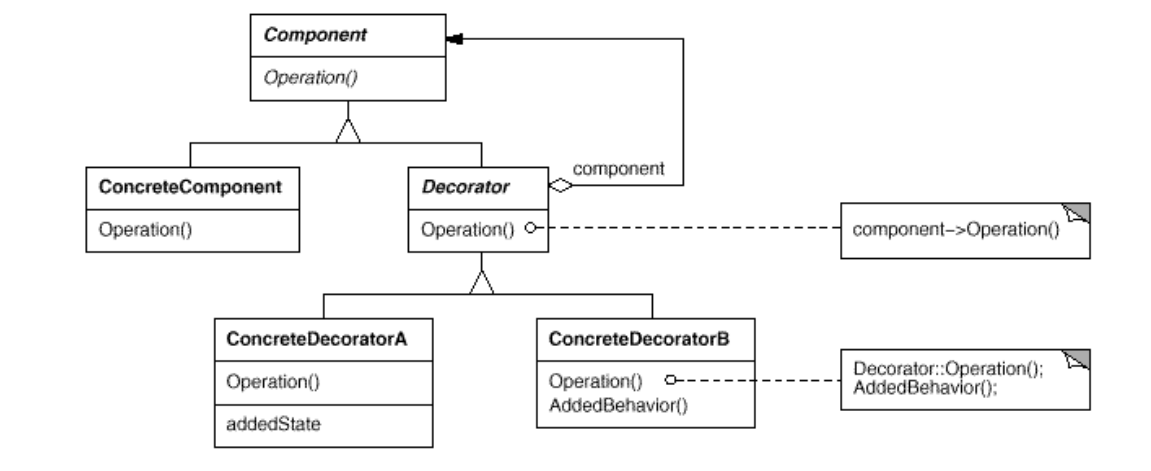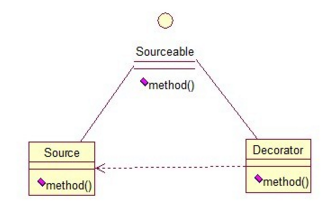9. Decorator
- Intent:
- Attach additional responsibilities to an object dynamically. Decorators provide a flexible alternative to subclassing for extending functionality.
- Also Known As:
- Wrapper
- Applicability:
- to add responsibilities to individual objects dynamically and transparently, that is, without affecting other objects.
- for responsibilities that can be withdrawn(cancel/remove these responsibilities).
- when extension by subclassing is impractical. Sometimes a large number of independent extensions are possible and would produce an explosion of subclasses to support every combination. Or a class definition may be hidden or otherwise unavailable for subclassing.
- Structure:

- Participants:
- Component
- defines the interface for objects that can have responsibilities added to them dynamically.
- ConcreteComponent
- defines an object to which additional responsibilities can be attached.
- Decorator
- maintains a reference to a Component object and defines an interface that conforms to Component’s interface.
- ConcreteDecorator
- adds responsibilities to the component.
- Component
- Collaborations
- Decorator forwards requests to its Component object. It may optionally perform additional operations before and after forwarding the request.
- Consequences:
- 1.More flexibility than static inheritance.
- 2.Avoids feature-laden(multifunction) classes high up in the hierarchy
- 3.A decorator and its component aren’t identical.
- 4.Lots of little objects. They can be hard to learn and debug.
- Related Patterns:
- Adapter: A decorator is different from an adapter in that a decorator only changes an object’s responsibilities, not its interface; an adapter will give an object a completely new interface.
- Composite: A decorator can be viewed as a degenerate composite with only one component. However, a decorator adds additional responsibilities—it isn’t intended for object aggregation.
- Strategy: A decorator lets you change the skin of an object; a strategy lets you change the guts. These are two alternative ways of changing an object
- Code Sample: Decorator

public interface Sourceable {
public void method();
}
public class Source implements Sourceable {
@Override
public void method() {
System.out.println("the original method!");
}
}
public class Decorator implements Sourceable {
private Sourceable source;
public Decorator(Sourceable source){
super();
this.source = source;
}
@Override
public void method() {
System.out.println("before decorator!");
source.method();
System.out.println("after decorator!");
}
}
public class DecoratorTest {
public static void main(String[] args) {
Sourceable source = new Source();
Sourceable obj = new Decorator(source);
obj.method();
}
}
